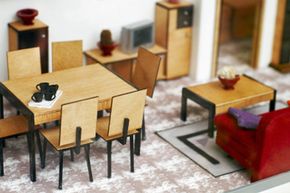Key Takeaways
- Small spaces benefit from furniture arrangements that serve multiple functions, such as entertainment and sleeping areas, and should capitalize on the room's best features, like views or high ceilings.
- To make a small space appear larger, use neutral colors for the walls, flooring and drapes, saving bright colors for accessories. Focus on maximizing natural light with sheer window treatments and strategic mirror placements.
- Leveraging light sources enhances the perception of space, making rooms feel more open and less cramped.
If you have a tiny living space and wonder how you'll ever make all your belongings fit and still look nice, you have a couple of unique challenges to address. You're not alone in having to create a little design wizardry to camouflage your home's shortcomings. Most indoor spaces present one challenge or another. Making huge rooms look friendly, small rooms look bigger and long rooms look less linear is what keeps interior designers in business. They use tried-and-true tricks to fool the eye and make the best use of a room's natural assets.
If this sounds a little like picking the best clothes to suit your body style, it is. When it comes to arranging furniture, you can disguise, flaunt and flatter small spaces with a couple of savvy furniture placement choices the way an artfully tied scarf can emphasize your face and draw attention away from those extra few pounds you gained over the holidays.
Advertisement
When you're trying to cram an overstuffed sectional into a small living room, it's hard to appreciate the advantages of a small house or apartment, but small can be beautiful. It can be greener, more efficient and more economical, too. Let's take a look at a few secrets the pros use to give tiny spaces big style. If you think of your studio apartment or loft as a compromise choice with limited potential, think again. A change in perspective may have you embracing the little house look and turning your back on your long term plan to buy a McMansion in the burbs when the economy improves.
Advertisement

